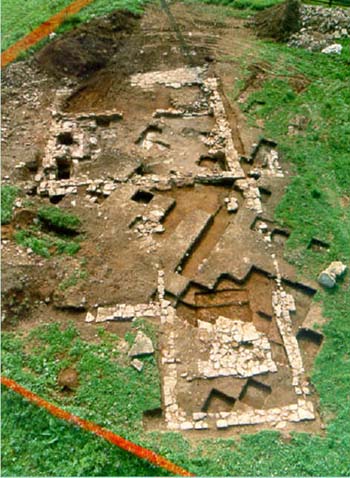
From June 1 through August 13, 1998, Cultural Resource Analysts’ personnel completed phase II and phase III investigations at archaeological site 15Bb75 along the proposed U.S. 27/68 upgrade in Bourbon County, Kentucky. These investigations were conducted at the request of the Kentucky Transportation Cabinet. Previous archaeological testing had recorded the existence of three buried historic structures at this site. The first structure was identified as the remains of William McConnell’s Homestead.
The second was thought to be an associated outbuilding, possibly a slave quarters. The final structure was thought to be a later house perhaps associated with the John Ardery occupation. However, this third structure was not investigated because there was little evidence of its existence and it appeared to be located about 75 m outside the project area. Work by Cultural Resource Analysts, Inc. focused on only the first two structures.
The archaeological investigation of 15Bb75 provides important insights into life at an early settlement in transition from a late frontier improvement to an upper middle class farmstead. The analysis of artifacts such as faunal remains, ceramics, window glass, nails, firearms, and architectural elements allowed interpretations to be made about the changing daily lifestyles of the families who lived at this location. The interpretations were enhanced with information found in historic documents such as tax records, census records, and journals.
The available archival data indicates that William McConnell settled at this site during the late 1780s. He was a relatively prosperous farmer who raised livestock and might have periodically rented slaves. In building Structure 1 he made an important and recognizable statement reflecting his wealth, his ethnic background, and his interaction with the values of the local Bourbon County community. When he died in 1823, he left his “mansion house and plantation,” as he called it, to his heirs. John Ardery, who married William McConnell’s daughter Elizabeth in 1818, inherited the house and a portion of the land after McConnell’s death. Ardery also became a prosperous farmer. He increased the size of his operation by purchasing surrounding land and, through lease or purchase, he obtained an increasing number slaves as his estate grew. By 1830 there were twenty people living at the Ardery homestead including thirteen family members and up to seven slaves.
Ardery and his family occupied the site until his death in 1853. In 1853, Lafayette Ardery, John Ardery’s son, inherited the house and farm. Lafayette and Fannie his wife lived at the site until about 1871, when they purchased a more commodious house closer to the county seat of Paris, Kentucky. By 1880, McConnell’s Homestead, now abandoned, had burned: it was not rebuilt. During the 1880s, a tenant house was constructed just west of the ruins of McConnell’s Homestead. Some of the building materials may have been scavenged from the ruins of the earlier structure. This tenant house was probably occupied until the 1920s. It had been razed by 1936.
